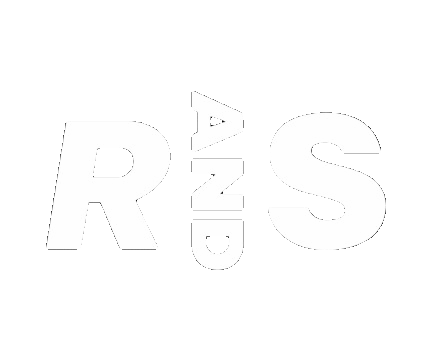3 minute read
A new regional art gallery, Ngununggula, is making a star of Australia's wild dog in The Dingo Project, for its summer exhibition.
Release the hounds!
For its summer exhibition, Ngununggula, a new regional art gallery at Retford Park in the NSW Southern Highlands, is making a star of Australia's wild dog.
The nearby town of Mittagong boasts a name thought to have derived from an Aboriginal word meaning 'little mountain', although it has also been suggested that the word's meanings include 'plenty of native dogs'.
The brainchild of Bandjalung man, curator, writer, artist and activist Djon Mundine, who lives in Mittagong, The Dingo Project opens on Sunday and features newly commissioned and existing work by more than 15 artists.
They include Michael Cook, Karla Dickens, Fiona Foley, Fiona Hall, Garth Lena, Danie Mellor and Jenny Sages.
Each of them, Mundine suggested, is responding to the question: "What does a dingo represent to you?"
More broadly, the exhibition seeks to explore the significance of ancestral dingos through a range of spiritual and historical narratives as interpreted by the artists, a majority of whom are Indigenous.
Visitors to The Dingo Project are greeted with a wall text relating a traditional Mildjingi-Wunggun dingo story once told to Mundine: "The Dingo: Wunggun, the Macassar, and the Matches".
It details Macassar man's repeated attempts to give Wunggun, or dingo man, a range of gifts - rice, tobacco, canoes, matches - and Wunggun's steadfast refusal.
"If I took these things from you," Wunggun finally explains, "I would become dependent and become a white man. (I would be civilised but dependent!)"
"That is the basic thrust of this show," Mundine explained. "How do we live with difference, with other people, other societies, other creatures?
"But also, in a Freudian sense, how do we live with the creature from the Id, this passionate nature that is in all human beings?
"This passion can lead to violence but it can also lead us to do incredible things. How do we live with other people without killing them, or losing our temper?"
Cultivating empathy for, and curiosity about, other people and the way they view the world, can help.
This exhibition drives an appreciation of the many facets of Australia's wild dog as both totem and symbol.
Hailing from Ramingining in the Northern Territory, Yolngu man Johnny Malibirr from the Ganalbingu clan, paints the storyline of Djanyarr, a dog spirit that created three streams of water inside a cave for Ganalbingu people to drink from, and which they still can (although the central stream, being sacred, is off-limits).
Meanwhile, Bidjara artist Michael Cook includes dingos as companions to several Aboriginal people in his painterly and highly theatrical photographs, including one figure in colonial costume riding a bicycle along a shoreline - a witty visual subversion of Europeans 'discovering' a supposedly unknown continent.
What these images appear to suggest is that while settlers may have regarded the dogs as 'wild', that wasn't necessarily the case for those who have lived alongside them for tens of thousands of years.
Elsewhere, Bpangerang woman Judith Crispin's multimedia work looks like an arched, stained-glass window centred on the shapes of two dingo pups.
It has a lengthy, and poetic, title: Comets in the Snow Gums and Alpine Flowers, the Night Orion and Estelle Crossed the Federal Highway, Falling in Traffic, in the Hymns of Winter Nightjars, and Rose Again Covered in Stars.
Upon closer inspection, it's evident Crispin has used several unusual techniques including Lumachrome glass print (which, she has said, is "literally constructed from light, earth and flesh"), cliche-verre and chemigram drawing to make the work.
The materials involved include - yes - two roadkill dingo pups, wildflowers, seeds, resin, wax, gold chloride, turmeric, rodinal and selenium toner.
These were exposed for 42 hours on silver-coated gelatin fibre paper in a geodesic dome, with the paper then nailed to stained ply and decorated with hand-sewn echidna quills.
It's a very 'direct' piece, not least because of the techniques involved, and also spiritually evocative, in that the light-filled pup forms seem to be ascending to heaven, a reading enhanced by the artwork's arched shape.
Tallulah McCord's digital drawings of canine characters (Dancing Loona, Protegene Beast) are all fangs, pointy ears and bushy tails - the sort of expressionist avatars expected if dogs discovered the internet and started online dating.
And Dhungatti artist Blak Douglas reimagines Goya's famous The Drowning Dog with a dingo in his signature pop style, drawing attention to the issue of 'the black dog', or depression, within First Nations communities, as he explains in the accompanying label.
An entire room has been given over to The Adventures of X and Ray, an ongoing series that began in the late 1980s as a collaboration between artist Michael Eather and Yorta Yorta artist Lin Onus.
After Onus died in 1996, his son, Tiriki, continued the series with Eather.
'Ray' the dingo and 'X' the stingray are fibreglass sculptures, placed in the centre of the space.
Then, through a series of works on paper they embark on sundry amusing adventures, including Michael and I Are Just Slipping Down to the Pub for a Minute, which sees Ray riding X as though he were a surfboard on the crest of Hokusai's Great Wave.
Pronounced 'Narn-an-goola', Ngununggula means 'belonging' in the language of the Gundungurra people, the traditional owners of the lands on which the not-for-profit gallery is located.
"Local matriarch Aunty Velma Mulcahy, who has been involved from the start, wanted to give us a name, and we're honoured that she did and we treat the name with respect," director Megan Monte said.
"We instil Indigenous voices throughout our artistic and education programs, through our events, and through our entry pavilion commission by Quandamooka artist Megan Cope," she said.
"In the entry pavilion we also have a text by Aunty Velma explaining the Dreamtime story of how the local river systems were made here."
Championed by artist Ben Quilty alongside a group of dedicated locals over a five-year period, Ngununggula opened in October 2021 in redeveloped heritage buildings dating from 1912 - a dairy and a vet clinic - adjacent to Retford Park, which is owned and managed by the National Trust.
Construction cost $7 million and the gallery negotiated a 25-year-lease.
"Ben Quilty's energy, drive and passion was instrumental in founding the gallery and, being one of our board members, he is still involved in everything we do," Monte said.
"He's got a real vision for this place, and our visions align, especially in terms of programming and community engagement."
Ngununggula enjoys operational funding from Wingecarribee Shire Council and has just received program funding from Create NSW.
"We also have a patrons program, which we rely on heavily," Monte said.
"More than $4 million was donated to build the gallery, so we are fortunate to have a strong, healthy pool of people who are invested in what we do.
The gallery's four enfilade-style exhibition spaces, which have wood-panelled cathedral ceilings, used to be cow sheds.
"The heritage architects we used kept some of the throwbacks, such as the light fittings, the switches and the brass plating on the floor, which is where the feed trolleys used to go," Monte explained.
From January 15, a new cafe, Hearth by Moonacres, will be located in the former vet clinic next to the gallery.
"This year we're launching five exhibitions as well as a range of public programs, educational activities and events," Monte said.
Exhibitions include John Olsen: Goya's Dog (March 19-May 15), and Ken Done and Rosie Deacon (August 6-October 10).
Are there plans for Ngununggula to become a collecting institution?
"We want to be, and that will be our next big project," Monte said.
"We'd need to build somewhere to house a collection, but we'd be silly not to consider it, because a lot of people in this community love art, own art and want to donate works."
The Dingo Project opens on Sunday and runs until March 6.
For information, visit https://ngununggula.com/







